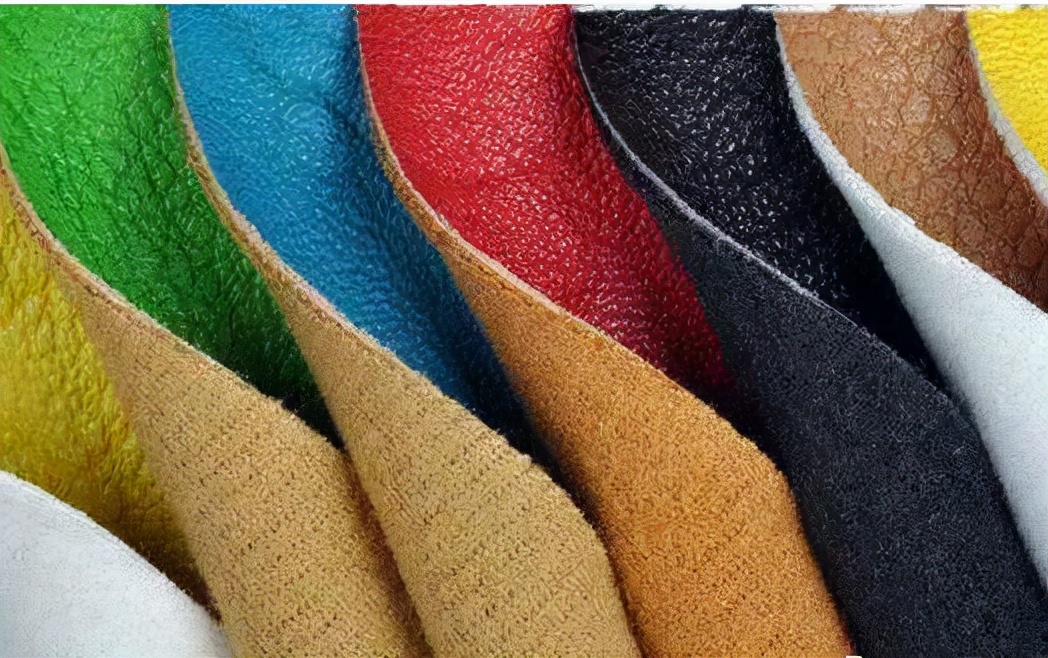
QB/T1333-2018 "Backpack" standard requires that the label should include information such as product name, product standard number, trademark, product number (model), main material, and qualified (inspection) identification.
You can refer to the main material information marked on the hanging tag to choose a bag. The label specifies that over 90% of the surface material should be made of top layer leather (excluding top layer transfer film leather), and can be labeled as "genuine leather".
Genuine leather can be divided into two categories: top layer leather and split layer leather.
Head layer leather: It is directly processed from the raw skins of various animals, or after depilation of thicker animal skins such as cattle, pigs, and horses, it is cut into two layers horizontally. The upper layer with tight fiber tissue is processed into various head layer skins.
Split layer leather: A two-layer part with loose fibrous tissue after cutting, which does not have a grain structure and can be used independently. It can also be processed by chemical material spraying or covering with PVC or PU film.
The leather materials of bags are mainly made of cowhide and sheepskin, as well as some special leather such as crocodile skin, ostrich skin, snake skin, pearl fish skin, and so on.
Yellow cowhide: The fiber is tightly woven, with small differences in parts. The natural grain surface is fine and beautiful, and the leather board is full and elastic, with excellent performance and a wide range of uses.
Sheepskin: characterized by thin skin panels, loose fiber weaving, and a soft, smooth, and delicate feel, the finished leather has good extensibility and elasticity, and the pores are fine and dense, irregularly distributed evenly.
Crocodile skin: Crocodile skin has a narrow and long body shape, with irregular protrusions and dense various polygonal oval scales of varying sizes, as well as larger irregular quadrilateral and rectangular scales, with a particularly fine and compact grain surface.
Ostrich skin: softer than crocodile skin, with protruding particles naturally forming at the base of the hair, arranged irregularly. The legs have no particles and are mostly polygonal scales.
How to identify genuine and fake skins?
#Due to the potential damage to DNA caused by leather raw materials during production and processing, there are situations where extraction cannot be obtained.
Consumer's Tips for Choosing Real Leather Bags
1. Look at the label: When choosing a bag, you can refer to the main material information marked on the hanging tag to choose the bag. Common leather bag materials include "cow leather", "sheep leather", "cow leather split layer leather", and so on. The label also stipulates that over 90% of the surface material can be labeled as "genuine leather" when using top layer leather (excluding top layer transfer film leather). When making a purchase, you can also choose "genuine leather" bags by looking at their appearance, smelling the smell, and feeling the touch.
2. Look at the appearance: The grain surface of natural leather is usually clear and visible, with natural texture and full color, while the surface of materials such as synthetic leather/synthetic leather is usually imitated grain patterns that easily disappear after being pressed hard, or the texture is relatively regular and consistent, which is not natural.
3. Smell: Genuine leather materials generally have the natural taste of leather, and even after treatment, the taste is more pronounced. Artificial leather/synthetic leather products, on the other hand, have a taste of plastic and solvents.
4. Touching sensation: The leather material has a flexible feel, and folding the front of the leather in half will result in natural wrinkles. Different parts of the leather will be bent separately, resulting in uneven creases in thickness and amount. However, materials such as synthetic leather and synthetic leather may have significant differences in elasticity when pulled in two directions due to the presence of a base fabric. The thickness and amount of creases in different parts of the material are similar when bent.
Maintenance Guidelines
Precautions and care methods for use: Genuine leather bags are relatively durable, and if properly maintained, they will not deform or change color for several years. When using genuine leather bags, it is important to avoid sharp accessories on the clothing to prevent scratching the surface of the bag; Try not to use genuine leather bags on rainy days to avoid getting damp and causing mold and deformation; Genuine leather bags should be protected from exposure to sunlight, to prevent aging of the leather, peeling of paint, color changes, and other phenomena.
Maintenance instructions: Genuine leather bags need to be wiped with a soft velvet cloth to remove any dust from the bag; It is best to place in a dry and cool place; When not in use for a long time, some newspapers can be placed inside the bag to support it and prevent deformation; Genuine leather bags can be regularly maintained and serviced by a professional maintenance agency.